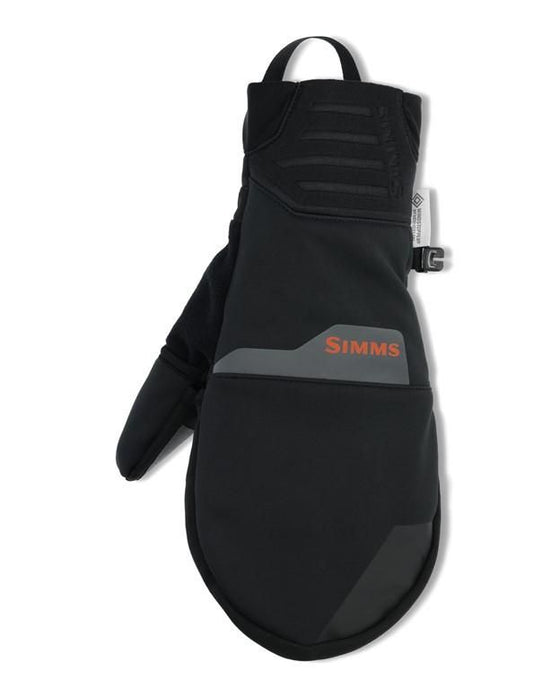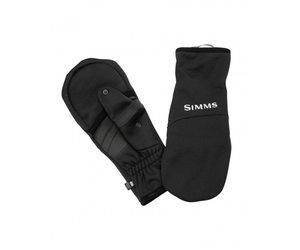Coldweather Gear Blog
Stay warmer and fish longer
Late Fall, Winter and early Spring fishing is usually
highlighted by a few notable aspects: small bugs, fine tippets, streamer eats and
of course, cold miserable weather. The last one, keeping most folks off the
water and tucked away until warmer conditions arrive in Spring. I for one, do the opposite. I head for any open water I can find to try and cure that itch and take any chance I can to fool a fish into eating. Fishing 12 months a year can be daunting, but the rewards are great. From sips on tiny midge dry flies to fish chasing down streamers in full attack mode, the late Fall and Winter are two of my favorite times to be on the water. Whether it’s still waters before ice up, tailwater fishing with tiny tippets and small bugs or swinging streamers on large rivers, weather is nothing to fear when prepared well.
Baselayers
First and foremost, layers are key in colder conditions and
understanding how warm each one keeps you personally. This gives you a great baseline for what gear you may need in certain conditions just by knowing how warm they keep you individually. Staying warm without sweating is key and understanding how moisture effects our core temperature in windy cold conditions. I personally prefer to wear a warmer pant layer such as the Simms Thermal Bottom or the Patagonia R2 TechFace Pants. This allows some more breathability and
keeps me from sweating as much with tight layers. If you prefer a tighter base
layer, the Simm’s Fleece Midlayer Bib or the Lightweight Baselayer
are fantastic options that you can then add a warmer pant layer over. I will do
this when temperatures really plummet, and the water is extremely cold.
For thinner baselayer tops, there are a few standouts for us here in the shop. Many folks will simply wear a T-shirt and put over that a Patagonia Air R1 layer or a Simms Thermal 1/4 Zip Top. I prefer something with long sleeves as my baselayer, making the Simms Lightweight Baselayer Top my personal choice. Warm but thin and lightweight, they allow you to breathe and keep moisture from building up. These base layers are key for comfort and longevity in cold weather. If you have a base layer that is uncomfortable or makes you sweat quickly, you inevitably will get colder faster. One thing I prefer to do as well, is to change into these base layers when I arrive at our fishing location for the day. I will wear layers I do not plan on wearing under my waders while fishing that day, so I know they are fresh, and have no moisture in them after the car ride. This especially applies to socks!





Coldweather Gear
A selection of our staff and customer favorite coldweather gear, to keep you warmer and fishing longer.

Jackets
The next layer and personally the most important to me is a thinner jacket. These should be somewhat windproof/water resistant and are basically the last line before I put a wading jacket on.
Once the temperatures have plummeted and a thinner jacket is no longer enough, i'll layer over everything with a Patagonia Swiftcurrent Jacket or Simms Bulkley Jacket, including my waders. There are a few standout options in this category, depending who you ask in the shop, you will hear a few different responses, and all are excellent options depending on personal preference.
The top three we all come back to though are the Patagonia R2 TechFace Hoody, the Simms Fall Run Hybrid Hoody and lastly, the Patagonia Nano Puff Fitz Roy Trout Hoody. These thinner layering jackets are extremely warm and provide a touch of much needed wind resistance and water resistance while in cold conditions. The R2 TechFace Hoody is more breathable than the puffy style jacket in the Fall Run Hybrid and Nano Puff Hoody style layers which for me personally is a major plus as I tend to perspire more. The Nano Puff and Fall Run Hybrid Hoody are more wind resistant than the TechFace Hoody and provide that extra bit of warmth for those who may catch a chill quicker than other folks.
Socks
Now that we’ve covered our full body layering. The last
components to think about are socks and gloves. For socks, I love the Simms Merino Thermal OTC Sock or the Merino Midweight Hiker Sock, depending on
how cold the conditions are. Again, the key to socks for me is to wear a different pair to where you are headed while traveling in the vehicle. Changing into a fresh pair of socks upon arrival after airing out your feet for a minute or two will make a major difference. Sweaty feet equal cold feet, fresh socks are a game changer, and I will even change out socks at lunchtime while taking a break in colder conditions.
Gloves
The most important component for many folks is keeping their hands warm. Obviously keeping them dry is the first step but the main factor for me is warmth without taking away from my feel and control. The Simms
Windstopper Foldover Mitten and Freestone Foldover Mitt, my personal favorite choices. I prefer mittens over 5-finger gloves as I can keep only a finger or 2 out to fish, with barely any exposure to the air on both my hands and fingers. This allows me to fish until it is very cold out and not have issues. Also take your gloves or mittens off while handling fish as it can harm their protective slime layer and keeping your gloves dry is key to a longer fishing day. For this reason, I will always have a backup pair with me, nothing will ruin a winter day of fishing faster than a dropped glove in the water early in the morning.
For me, late fall and winter are among my favorite times to be out on the water. I love escaping the summer crowds and enjoying the peace and quiet. While year-round fishing isn’t for everyone, having the right layering gear and clothing can keep you warm and dry, allowing you to fish even in challenging conditions. So, gather your gear and head out—fishing season never ends unless we choose to let it.




